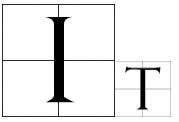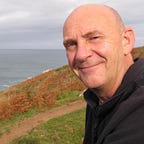Caernarfon Castle and the Princes of Wales
Why is the first son of the English Monarch the Prince of Wales?
 It is under a leaden overcast sky that I cross the “Pont yr Aber” and look back at the red dragon flags proudly fluttering on Caernarfon Castle’s turrets, catching the gentle breeze of the Menai Strait. The formidable solid walls match the colour of the drizzling rain, they are immutable and permanent, symbolic and functional, the castle has stood in this place for over seven hundred years.
It is under a leaden overcast sky that I cross the “Pont yr Aber” and look back at the red dragon flags proudly fluttering on Caernarfon Castle’s turrets, catching the gentle breeze of the Menai Strait. The formidable solid walls match the colour of the drizzling rain, they are immutable and permanent, symbolic and functional, the castle has stood in this place for over seven hundred years.
In the Thirteenth Century, Edward the First of England fought and defeated the last of the independent Welsh Princes and established English rule with the building of these powerhouses of Norman control, and today Wales has some of the finest surviving examples of medieval castles in all of Europe.
Besides leaving Wales with his iron ring of castles, Edward also, according to legend, promised the people of Wales, a prince born in Wales and who could not speak a word of English. The people of Wales understood this to mean a prince who like them, spoke Welsh. He then presented them with his son, born in Caernarfon Castle and still as a baby, not yet able to speak any language at all.
Whether this story is factual is unknown but Edward’s son, the future Edward the Second, was born in Caernarfon and like his father probably spoke Norman French rather than English. He became the first English Prince of Wales; the title conferred on him at age sixteen in Lincoln. The next Prince of Wales was Edward’s grandson, known as the Black Prince, because of the black armour he wore at the battle of Crecy. Another origin for this sombre monicker is the cruelty he inflicted upon the French during the Hundred Years War.
Since then, the title of Prince of Wales has been given to the heir to the British Crown and is the position currently held by Charles, the eldest son of the present reigning British monarch, Queen Elizabeth the Second.
Over the centuries the Princes of Wales did not have a public investiture, they usually performed the ceremonial pomp in front of members of the houses of Parliament using the former coronet of the Welsh Prince, Llewellyn the Last, until that headpiece became too old and fragile.
It wasn’t until the twentieth century that it was decided to make the investiture of Prince Edward (the future Edward the Eighth) a public occasion, and it was a decision that owed much to the schemes of the politician David Lloyd George.
Lloyd George, ever concerned about his popularity persuaded King George the Fifth to agree to a public ceremony for the king’s son to be held at the castle of Caernarfon in Lloyd George’s parliamentary constituency and the same place where the first English Prince of Wales had been born. Edward had to endure the display of his investiture as Prince of Wales wearing robes and silk breeches, which he considered ludicrous. Perhaps that was something that contributed to putting him off a coronation ceremony. Edward the Eighth was never crowned king and so avoided the spectacle of a coronation in Westminster abbey. He avoided a ceremony which he would have hated because he fell in love with someone the Royal Family and the British establishment considered wholly unsuitable. He had to choose between an American divorcee or the Crown. Some attitudes don’t seem to change.
Over fifty years later, in 1969, Charles, now the oldest and longest-serving heir apparent in British history, had his title ceremoniously invested at Caernarfon Castle. The pomp and circumstance of the ceremony whilst seeming to come from a long historical tradition were, in fact, spectacle and pageantry designed by the princes’ uncle, Lord Snowden, specifically with a television audience in mind.
Within the ranks of the Welsh Nationalist community the investiture of a new English, Prince of Wales caused disagreement. In his position as a lecturer at Aberystwyth University, Edward Millward, a former Vice President of the Welsh Nationalist Party Plaid Cymru and a founder of the Welsh Language Society took on the role of tutoring the Prince in the Welsh language and culture.
After nine weeks of studying, Charles was able to deliver his speech in both Welsh and English and perhaps gained understanding and sympathy for the independence aspirations of some people he met. This was a sentiment he expressed in his speech, part of which translated to English states:
“It is with a certain sense of pride and emotion that I have received these symbols of office, here in this magnificent fortress, where no one could fail to be stirred by its atmosphere of time-worn grandeur, nor where I myself could be unaware of the long history of Wales in its determination to remain individual and to guard its own particular heritage.”
There were others with a more republican leaning such as the folk singer Dafydd Iwan, whose satirical song “Carlo” mocks and pokes fun at Charles’ attempts to learn anything about Wales when, according to the song, he would rather play polo. Then some responded to what they saw as a symbol of the subjugation of the Welsh dating right back to Edward the First, with a far more extreme riposte.
On the evening before the investiture, Alwyn Jones and George Taylor, who have been dubbed the Abergele Martyrs, are believed to have been planning to plant a bomb near the railway line in Abergele which was carrying the prince to his investiture. We know them as the “Martyrs” because the bomb they were carrying exploded prematurely and killed both men.
There were also other bombs, one planted in a Caernarfon police constable’s garden which went off and two others, including one on Llandudno Pier designed to stop the Royal Yacht Britannia from docking, both of which failed to explode. A few days after the investiture a boy suffered leg injuries and was disabled, after he mistook one of the unexploded bombs for a football and kicked it, causing it to detonate. Modern warfare would consider him to be “collateral damage.”
Over the centuries since Edward the First, none of the Princes of Wales has been Welsh. Although in the mixed melting pot of populations such as there are in the British Isles, what are the terms by which we ascribe a national identity? Is it the place of birth? The first Norman Prince was born in Caernarfon but was not Welsh. Is it language? Charles learned some Welsh but could not be described as Welsh. Perhaps it is the love and appreciation of a place and culture, but you can have all that and still be an outsider. Maybe it is ancestry, tracing back through generations for a long line back into the mists of time to some Celtic roots, but how far back must we go to belong? The future Henry the Eighth became Prince of Wales on the death of his brother Arthur and he was the great-grandson of Owain ap Maredudd ap Tudur from Ynys Môn in North Wales, but did such antecedents mean he was therefore Welsh?
Notions of what constitutes a national identity are always contested and when people are marginalized by a more powerful neighbor, then a robust challenge to injustice should be expected. How far should one go when making a stand? To quote the next king of Britain, Wales has a “determination to remain individual and to guard its own particular heritage.” However, some would question, is it ever worth causing “collateral damage” when fighting to preserve that heritage?
